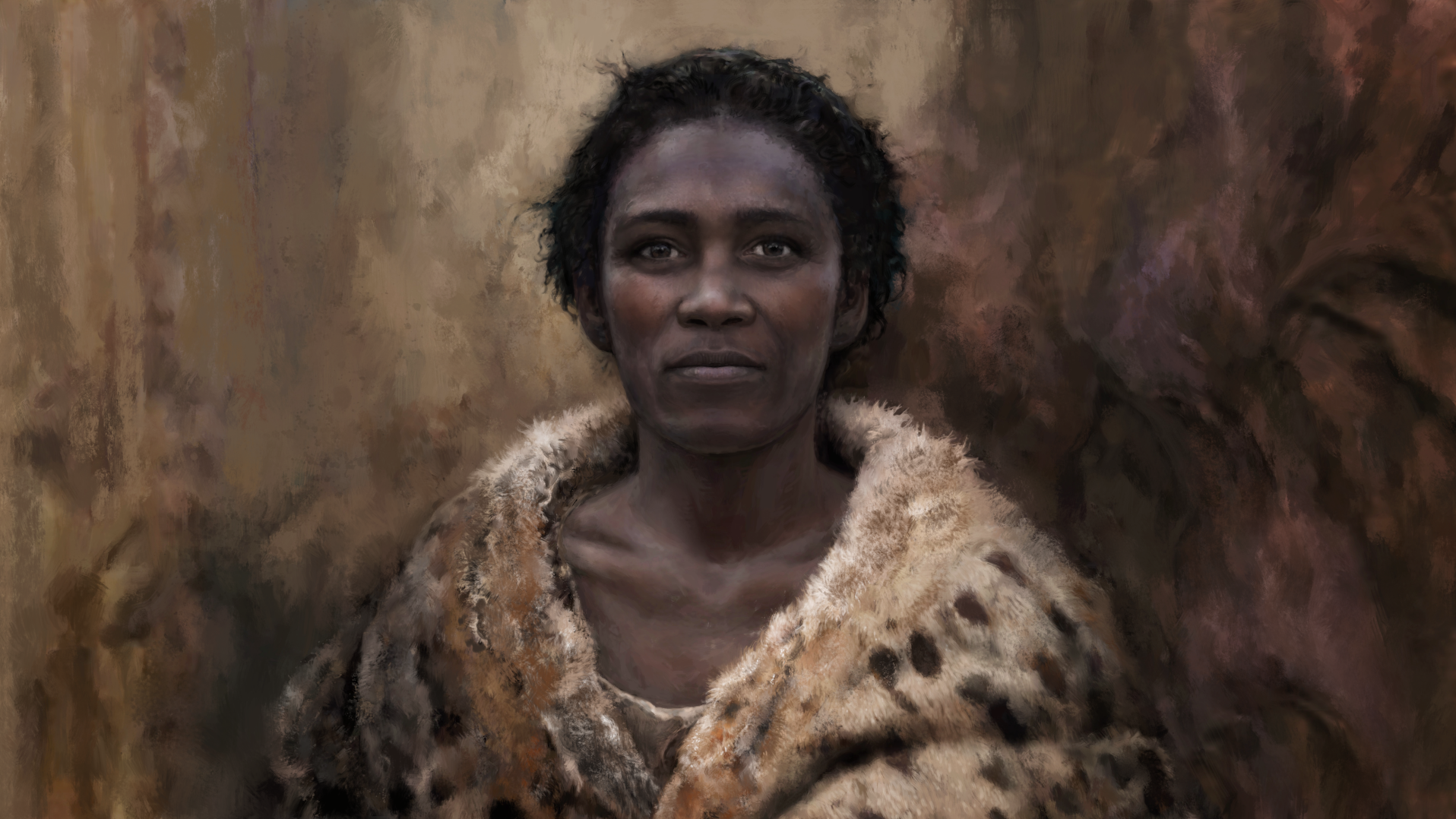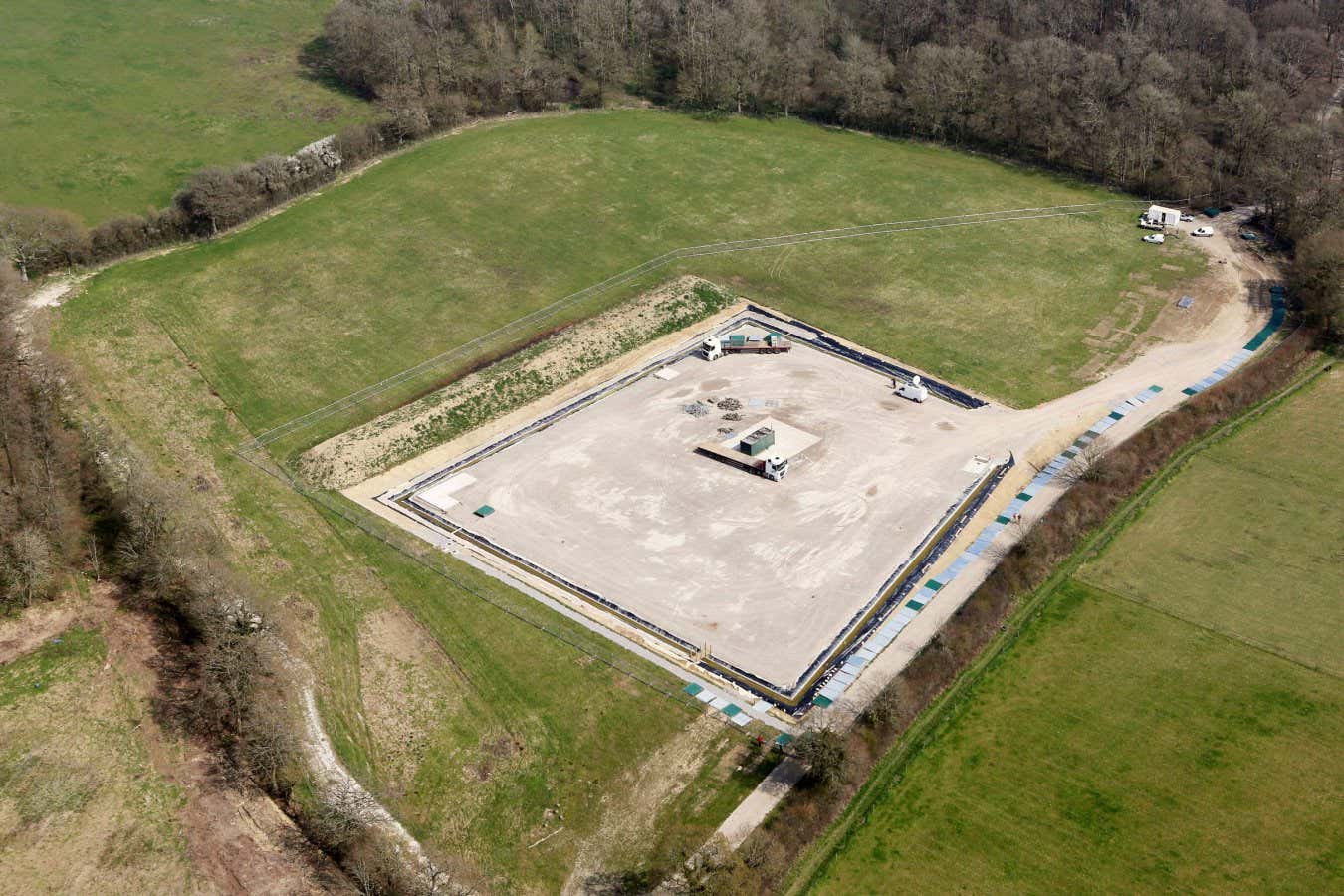Neanderthals and modern humans interbred for several millennia, shortly after the ancestors of all non-Africans moved into Eurasia, according to two new studies. Although these Homo sapiens populations got an evolutionary advantage from the new Neanderthal genes, not everyone who mingled with Neanderthals made it, and some modern human lineages went extinct.
“The human story — human history — is not just a story of success,” Johannes Krause, a paleogeneticist at the Max Planck Institute for Evolutionary Anthropology in Leipzig, Germany, said at a news conference Wednesday (Dec. 11). Different human groups in Europe “actually went extinct several times — including Neanderthals going extinct around that time, 40,000 to 45,000 years ago,” he said.
Krause, along with an international team of researchers, analyzed seven genomes from H. sapiens who lived in Europe around 45,000 years ago. Their study, published Thursday (Dec. 12) in the journal Nature, showed that Neanderthal DNA found in all ancient and present-day non-Africans came from one “pulse” of interbreeding that happened somewhere around 45,000 to 49,000 years ago.
In the Nature study, the researchers looked at the genomes of six skeletons found at the site of Ilsenhöhle in Ranis, Germany, as well as one genome from a skeleton found at the site of Zlatý kůň in the Czech Republic. They discovered that the person from the Czech Republic was distantly related to the people from Germany, meaning they all descended from the same population that moved to Europe from Africa.
Additionally, by looking closely at the genomes of these seven ancient people who lived in Europe around the same time as the Neanderthals, the research team discovered that the Ranis/Zlatý kůň people split off quickly from the original population that moved out of Africa — and that the split happened shortly after the original population interbred with Neanderthals. Then, the Ranis/Zlatý kůň lineage died out.
Related: ‘More Neanderthal than human’: How your health may depend on DNA from our long-lost ancestors

Since most modern non-African humans have at least a small amount of Neanderthal DNA in their genomes — around 1% to 3% — the researchers reasoned that all of these people are likely descended from one major wave of people who left Africa and interbred with Neanderthals.
This means that “all modern human remains outside of Africa over 50,000 years old are not ancestors of modern-day people” but rather evolutionary dead-ends, study lead author Arev Sümer, an archaeogeneticist at the Max Planck Institute for Evolutionary Anthropology, said at the news conference.
A separate study, published Friday (Dec. 13) in the journal Science, also employed genomic analysis of ancient and present-day humans to arrive a similar conclusion: The vast majority of Neanderthal DNA in modern humans comes from one period of gene flow that lasted for about seven millennia, between 50,500 and 43,500 years ago.
In the Science study, Leonardo Iasi, an evolutionary geneticist at the Max Planck Institute for Evolutionary Anthropology, led a team of researchers in combing through 334 modern-human genomes from around the world. They aimed to investigate shared Neanderthal ancestry, figure out when humans and Neanderthals mated, and identify Neanderthal genes that provided adaptive benefits to humans.
When analyzing the genomic data, the researchers found unique Neanderthal ancestry that suggested just a handful of Neanderthal groups contributed the Neanderthal DNA seen in modern humans. The small number of Neanderthals passing on their DNA to modern humans led the researchers to question when the interbreeding happened.

Based on the length of Neanderthal ancestry segments in modern humans — which become shorter with each generation due to DNA recombination, or when two parents’ genetic material is shuffled up and passed on to offspring — the team found that an “extended pulse” model was the best fit for the data, meaning Neanderthals and modern humans mated over multiple generations for roughly 7,000 years.
Additionally, by scanning the genomes for regions with unexpectedly high frequencies of Neanderthal ancestry, the team identified 86 regions in the modern-human genome that suggested mating with Neanderthals conferred immediate adaptation advantages. Specifically, the genome regions related to skin pigmentation, metabolism and immunity had a lot of Neanderthal DNA.
“Many of these genes may have been immediately beneficial to modern humans as they encountered new environmental pressures outside Africa,” the researchers wrote in the Science study.
Based on evidence such as tool types, archaeologists have proposed theories about how and where humans and Neanderthals overlapped in Europe between 50,500 and 43,500 years ago, and both the Nature and the Science studies provide genetic support for those ideas.
Related: Neanderthals didn’t truly go extinct, but were rather absorbed into the modern human population, DNA study suggests
However, neither study can answer a long-standing question: What did the interactions between Neanderthals and modern humans actually look like?
“We haven’t seen modern-human DNA in Neanderthals,” Krause said, but beyond that, they are mostly guessing about what happened when the two groups first met. However, Priya Moorjani, a geneticist at the University of California, Berkeley and co-author of the Science paper, said at the news conference that “differences that we imagine between these groups to be very big are actually very small, genetically. We were far more similar than we were different.”
And although we are closer to understanding how early H. sapiens may have interacted with Neanderthals, questions remain. For example, where do the Denisovans — who, along with the Neanderthals, were our closest extinct relatives — come into the picture, and how were other parts of the world populated?
“Further analysis, including studies of ancient genomes from Eurasia and Oceania, will be critical for inferring the timing of human dispersal across Eurasia and the Pacific region,” Iasi and colleagues wrote.









Leave a Comment